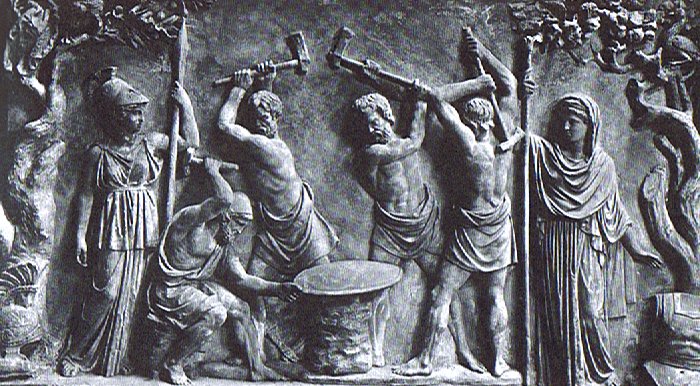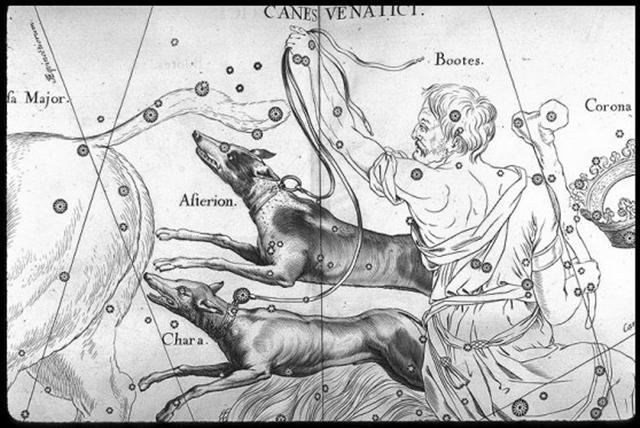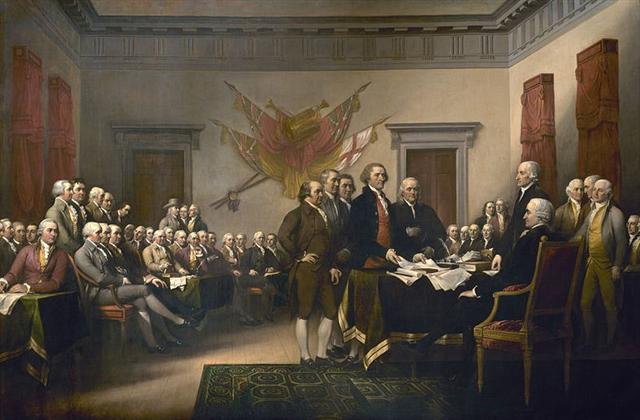Bb3.5
Once again. There were 4 Cardinal Winds ruled by
the White Goddess Cardea who was the Goddess
of Hinges.

 |
 |
 |
 |
 |
 |
 |
|
Bb3-19 |
Bb3-20 |
Bb3-21 |
Bb3-22 (100) |
Bb3-23 |
Bb3-24 |
Bb3-25 (524) |
| E
tagata hakatu ki to
ika e vaha te ika |
ma te
ua |
kua pua te hahine |
kua tere ko to haga |
ki te
tagata haga
|
ki tona mea ke -
kua oho koia ki te haga |
mai moe koia ki te
mago - kua haga i
tona mea ke |
|
Nov 3 |
4 |
5 |
6 (310) |
7 |
8 |
9 |
|
ω
Bootis (227.2),
NEKKAR (Herdsman) =
β
Bootis
(227.3),
σ
Librae (227.5),
π²
Oct.
(227.7),
NADLAT (Mean Little Ones) = ψ Bootis
(227.8), π Lupi (227.9) |
15h (228.3)
ZUBEN HAKRABIM = ν Librae
(228.3), λ Lupi (228.9) |
ω
Oct. (229.3),
ι
Librae (229.6),
κ
Lupi (229.7),
ζ
Lupi (229.8) |
Al Zubānā-14b (Claws)
χ
Bootis (230.3),
PRINCEPS =
δ
Bootis
(230.6),
ZUBEN ELSCHEMALI (Northern Claw) =
β
Librae
(230.8) |
μ
Lupi,
γ
Tr. Austr.
(231.3), ο Librae (231.8) |
ο
Cor. Borealis (232.0),
δ
Lupi (232.1),
φ¹,
ν²
Lupi (232.2),
ν¹
Lupi (232.3),
ε
Lupi (232.4),
φ²
Lupi (232.5),
PHERKAD (The Dim One of the Two Calves) =
γ
Ursae Min.
(232.6),
ε
Librae (232.7),
η
Cor. Borealis (232.8),
υ
Lupi (232.9)
*191.0 = *232.4 - 41.4 |
ALKALUROPS (The Herdsman's Lance) =
μ
Bootis
(233.1),
ED ASICH (Male Hyena) =
ι
Draconis
(233.2) |
 |
|
VISIBLE CLOSE TO THE
FULL MOON: |
|
MENKAR (The Nose) =
α
Ceti
(44.7) |
3h (45.7)
GORGONEA TERTIA =
ρ
Persei
(45.1),
ALGOL (The Demon) =
β
Persei
(45.9) |
ι
Persei (46.1),
MISAM (Next to the Pleiades) =
κ
Persei
(46.2),
GORGONEA QUARTA =
ω
Persei
(46.7),
BOTEIN (Pair of Bellies) =
δ
Arietis
(46.9) |
ζ Arietis (47.7) |
ZIBAL (Young Ostriches) =
ζ
Eridani (48.0),
κ
Ceti (48.9) |
τ Arietis (49.7) |
ALGENIB
PERSEI = α Persei (50.0), ο Tauri (50.2), ξ Tauri (50.8)
GIENAH (γ Corvi) |
|
*44 = *409 |
*410 |
*411 |
*412 |
*48 = *413 |
→ BHARANI |
*50 |
|
"March
24 |
25 (125 - 41) |
26 |
27 |
28 |
29 (88) |
30 |
 |
 |
 |
 |
 |
 |
 |
|
Bb3-26 (525) |
Bb3-27 |
Bb3-28 |
Bb3-29 (107) |
Bb3-30 |
Bb3-31 (530) |
(18 * 29½) |
|
ko te marama kua haga
i tona mea ke |
ma te hakaua |
koia kua haga i to kava |
kua haati ia e kava |
ko te kava o Motoipua |
ko te marama kua haga
i tona mea ke |
o te kava kua haati |
|
Kava. 1. Sour; salty: vai kava,
saltwater, sea; te kava o te haíga, acrid underarm smell;
tagata kava - tagata kakara i te kava, man with smelly armpits.
2. He-kava te haha, to be thirsty. 3. To turn sour, to become
embittered, bad-tempered, exasperated (used with manava):
tagata manava kava, bad-tempered, angry man. Vanaga. Bitter,
salt; vai kava, brackish water; hakakava, to embalm;
kavakava, acid, sharp, bitter, salt, spiritous, vinegar,
poisonous, disagreeable; akavakava, to make sharp;
hakakavakava, to make acid. P Pau.: kava, disagreeable to
the taste; kavakava, acid, sharp. Mgv.: kava, to be
bitter, sour, acid, salt. Mq.: kava, bitter. Ta.: ava,
bitter, acid, salt. Kavahia: 1. Comfort, comfortable, to
feast; hakakavahia, comfort, comfortable. 2. Repulsive (of
food), disgusted; hakakavahia, repulsion. Kavakava,
rib; moi kavakava, a house god G. P Mgv.: vakavaka,
the breast. Mq.: vakavaka, vaávaá, rib. Ma.:
wakawaka, parallel ridges. We shall need all the available
material in order to determine the germ sense of this word. Sa.:
va'ava'a, the breast-bone of a bird; fa'ava'a, the frame
as of a slate. To.: vakavaka, the side. Fu.: vakavaka,
the side below the armpit. Ha.: hoowaa, to make furrows. In
all these we may see the idea of ridge or depression, or of both, as
primal (Rapanui, Samoa, Marquesas, Maori, Hawaii), and as secondary
the part of the body where such appearances is common (Mangareva,
Tonga, Futuna). Churchill. Mgv.: kava, the pepper plant and
the drink made therefrom. Ta.: ava, id. Mq.: kava, id.
Sa.: 'ava, id. Ma.: kawa, a pepper. Kavakava, a
fish. Sa.: 'ava'ava, id. Kavapui, a tree. Ta.:
avapuhi, a fragrant plant. Mq.: kavapui, wild ginger.
Sa.: 'avapui, id. Ha.: awapuhi, id. Churchill. Mq.:
ava, a small fish of sweet water. Sa.. 'ava'ava, a small
fish. Ha.: awa, a fish. Kakava, burnt. Sa.: 'a'ava,
very hot. Churchill.
 |
|
Nov 10 (314) |
11 |
12 |
13 |
14 |
15 |
16 (320) |
|
NUSAKAN (Pauper's Bowl) = β Cor. Bor.
(234.0), κ¹ Apodis (234.3), ν Bootis (234.7), ζ Librae
(234.9) |
θ Cor. Borealis (235.3), γ Lupi (235.6),
GEMMA =
α Cor. Bor.,
ZUBEN ELAKRAB = γ Librae, QIN = δ Serpentis, ε Tr.
Austr.
(235.7), μ Cor. Borealis (235.8), υ Librae (235.9)
SIRRAH (α Andromedae) |
φ Bootis (236.2), ω Lupi, τ Librae (236.3), ψ¹ Lupi
(236.7), ζ Cor. Borealis (236.9) |
κ
Librae (237.2),
ι
Serpentis (237.4),
ψ²
Lupi,
ρ
Oct.
(237.5), γ Cor. Borealis, η Librae (237.7), COR
SERPENTIS = α Serpentis
(237.9)
*196.0 = *237.4 - *41.4 |
π
Cor. Borealis,
UNUK ELHAIA (Necks of the Serpents) =
λ
Serpentis
(238.1),
CHOW =
β
Serpentis
(238.6) |
κ
Serpentis (239.3),
δ
Cor. Borealis,
TIĀNRŪ =
μ
Serpentis
(239.5),
χ
Lupi, (239.6),
ω
Serpentis (239.7),
BA (= Pa) =
ε
Serpentis,
χ
Herculis (239.8).
κ
Cor.
Borealis, ρ Serpentis (239.9) |
λ
Librae (240.0),
β
Tr. Austr. (240.3),
κ
Tr. Austr. (240.4),
ρ
Scorpii (240.8)
*199.0 = *240.4 - *41.4 |
|
... In other words,
the ancient Druidic religion based on the oak-cult will
be swept away by Christianity and the door - the god
Llyr - will languish forgotten in the Castle of
Arianrhod, the Corona Borealis. This helps us to
understand the relationship at Rome of Janus and the
White Goddess Cardea who is ... the Goddess of Hinges
who came to Rome from Alba Longa. She was the hinge on
which the year swung - the ancient Latin, not the
Etruscan year - and her importance as such is recorded
in the Latin adjective cardinalis - as we say in
English 'of cardinal importance - which was also applied
to the four main winds; for winds were considered as
under the sole direction of the Great Goddess until
Classical times ... |
|
VISIBLE CLOSE TO THE
FULL MOON: |
|
σ Persei (51.6) |
No star listed (52) |
ψ
Persei (53.1)
ACRUX (α
CRUCIS) |
δ
Persei (54.7) |
Al Thurayya-27 (Many Little Ones) /
Krittikā-3 (Nurses of Kārttikeya) /
TAU-ONO (Six Stones)
ATIKS =
ο
Persei, RANA (Frog) =
δ
Eridani
(55.1),
CELAENO (16 Tauri), ELECTRA (17), TAYGETA (19),
ν
Persei (55.3), MAIA (20), ASTEROPE (21), MEROPE (23)
(55.6) |
Hairy
Head-18 (Cockerel) /
Temennu-3
(Foundation Stone)
ALCYONE
(56.1),
PLEIONE (28 Tauri), ATLAS (27 Tauri)
(56.3) |
MENKHIB (Next to the Pleiades =
ζ
Persei
(57.6)
PORRIMA (γ Virginis) |
|
*416 |
*417 |
*418 |
*419 |
*55 = *408
+ *12 |
*56 =
*421 |
*422 |
|
"March
31 |
"April
1 (91) |
2 (133
- 41) |
3 |
4 |
5 (95) |
6 |
 |
*11 |
 |
*15 |
 |
|
Bb3-5 (83) |
Bb3-16 (94) |
Bb3-31 (530) |
| ki te henua |
ki to toa |
ko te marama kua haga i tona mea
ke |
|
April 20 (110) |
May 1 (121) |
May 16 (136) |
|
HAMAL
(*30) |
BHARANI (*41.4) |
ALCYONE (*421) |
|
*26 / *15 * 360 = 624
= 364 + 260
= 360 + 264 = 390 + 234 |
|
... Strassmeier and Epping, in their
Astronomishes aus Babylon, say that there its stars formed
the third of the twenty-eight ecliptic constellations, -
Arku-sha-rishu-ku, literally the Back of the Head of
Ku, - which had been established along that great circle
milleniums before our era; and Lenormant quotes, as an
individual title from cuneiform inscriptions, Dil-kar,
the Proclaimer of Dawn, that Jensen reads As-kar, and
others Dil-gan, the Messenger of Light. George Smith
inferred from the tablets that it might be the Star of the
Flocks; while other Euphratean names have been Lu-lim,
or Lu-nit, the Ram's Eye; and Si-mal or Si-mul,
the Horn star, which came down even to late astrology as the
Ram's Horn. It also was Anuv, and had its
constellation's titles I-ku and I-ku-u, - by
abbreviation Ku, - the Prince, or the Leading One, the
Ram that led the heavenly flock, some of íts titles at a
different date being applied to Capella of Auriga. Brown
associates it with Aloros, the first of the ten mythical kings
of Akkad anterior to the Deluge, the duration of whose reigns
proportionately coincided with the distances apart of the ten
chief ecliptic stars beginning with Hamal, and he deduces from
this kingly title the Assyrian Ailuv, and hence the
Hebrew Ayil; the other stars corresponding to the other
mythical kings being Alcyone, Aldebaran, Pollux, Regulus, Spica,
Antares, Algenib, Deneb Algedi, and Scheat ... |
The creation of Sampo was a final
and good result after several other
attempts had been unsuccessful (it was stated in
Kalevala):
... On the first day of their labour // He himself, smith
Ilmarinen, // Stooped him down, intently gazing, // To the
bottom of the furnace, // If perchance amid the fire //
Something brilliant had developed.
From the flames there rose a crossbow, // Golden bow from out
the furnace; // 'Twas a gold bow tipped with silver, // And the
shaft shone bright with copper.
And the bow was fair to gaze on, // But of evil disposition
// And a head each day demanded, // And on feast-days two
demanded, // He himself, smith Ilmarinen, // Was not much
delighted with it, // So he broke the bow to pieces, // Cast it
back into the furnace.
And a plough rose from the furnace, // With the ploughshare
golden-shining, // Golden share, and frame of copper, // And the
handles tipped with silver.
And the plough was fair to gaze on, // But of evil
disposition; // Ploughing up the village cornfields, //
Ploughing up the open meadows,
Therefore did smith Ilmarinen // Take no slightest pleasure
in it. // And he broke the plough to pieces, // Cast it back
into the furnace,
And a boat rose from the furnace, // From
the heat rose up a red boat, // And the prow was
golden-coloured, // And the rowlocks were of copper.
And the boat was fair to gaze on, // But
of evil disposition; // It would go to needless combat, // And
would fight when cause was lacking,
And a heifer then rose upward, // With her
horns all golden-shining, // With the Bear-stars on her
forehead; // On her head appeared the Sun-disc.
And the cow was fair to gaze on, // But of
evil disposition; // Always sleeping in the forest, // On the
ground her milk she wasted. Therefore did smith Ilmarinen, //
Take no slightest pleasure in her, // And he cut the cow to
fragments, // Cast her back into the furnace ...
Number 421 corresponded to 365 + 56 (= 408 +
13 = 395 + 26 = 165 + 256, etc) and here was
Alcyone. And here we will better understand the reasons for
421
glyphs on side a of the B tablet.
We can now better appreciate the number play
between 3-25 (→ Council of Nicaea)
and 5-25 (cfr Bb3-25). For 3-25 points at March 25,
the Julian date for spring equinox, and 5-25 should then
represent both May 25 and the year for the Council of Nicaea:
... When Julius Caesar established his
calendar in 45 BC he set March 25 as the spring equinox.
Since a Julian year (365.25 days) is slightly longer than an
actual year the calendar drifted with respect to the
equinox, such that the equinox was occurring on about 21
March in AD 300 and by AD 1500 it had reached 11 March. This
drift induced Pope Gregory XIII to create a modern Gregorian
calendar. The Pope wanted to restore the edicts concerning
the date of Easter of the Council of
Nicaea of AD 325. (Incidentally, the date of Easter
itself is fixed by an approximation of lunar cycles used in
the Hebraic calendar, but according to the historian Bede
the English name 'Easter' comes from a pagan celebration by
the Germanic tribes of the vernal - spring - equinox.)
Due to the precession since the times of the
Greek
the Pleiades had evidently floated 8 weeks further down in the
river of time.
... The Abipones of the Paraguay River country consider them
their great Spirit Groaperikie, or Grandfather; and in
the month of May, on the reappearance of the constellation, they
welcome their Grandfather back with joyful shouts, as if he had
recovered from sickness, with the hymn, 'What thanks do we owe
thee! And art thou returned at last? Ah! Thou hast happily
recovered!' and then proceed with their festivities in honor of
the Pleiades' reappearance ...
... About Carmenta we know from the historian Dionysus
Periergetis that she gave orcales to Hercules and lived to
the age of 110 years. 110 was a canonical number, the ideal
age which every Egyptian wished to reach and the age at
which, for example, the patriarch Joseph died. The 110 years
were made up of twenty-two Etruscan lustra of five
years each; and 110 years composed the 'cycle' taken over
from the Etruscans by the Romans. At the end of each cycle
they corrected irregularities in the solar calendar by
intercalation and held Secular Games. The secret sense of 22
- sacred numbers were never chosen haphazardly - is that it
is the measure of the circumference of the circle when the
diameter is 7. This proportion, now known as pi, is
no longer a religious secret; and is used today only as a
rule-of-thumb formula, the real mathematical value of pi
being a decimal figure which nobody has yet been able work
out because it goes on without ever ending, as 22 / 7 does,
in a neat recurring sequence [3.142857142857 ...]. Seven
lustra add up to thirty-five years, and thirty-five at Rome
was the age at which a man was held to reach his prime and
might be elected Consul. (The same age was fixed upon by a
Classically-minded Convention as the earliest at which an
American might be elected President of the United States.)
...

|








